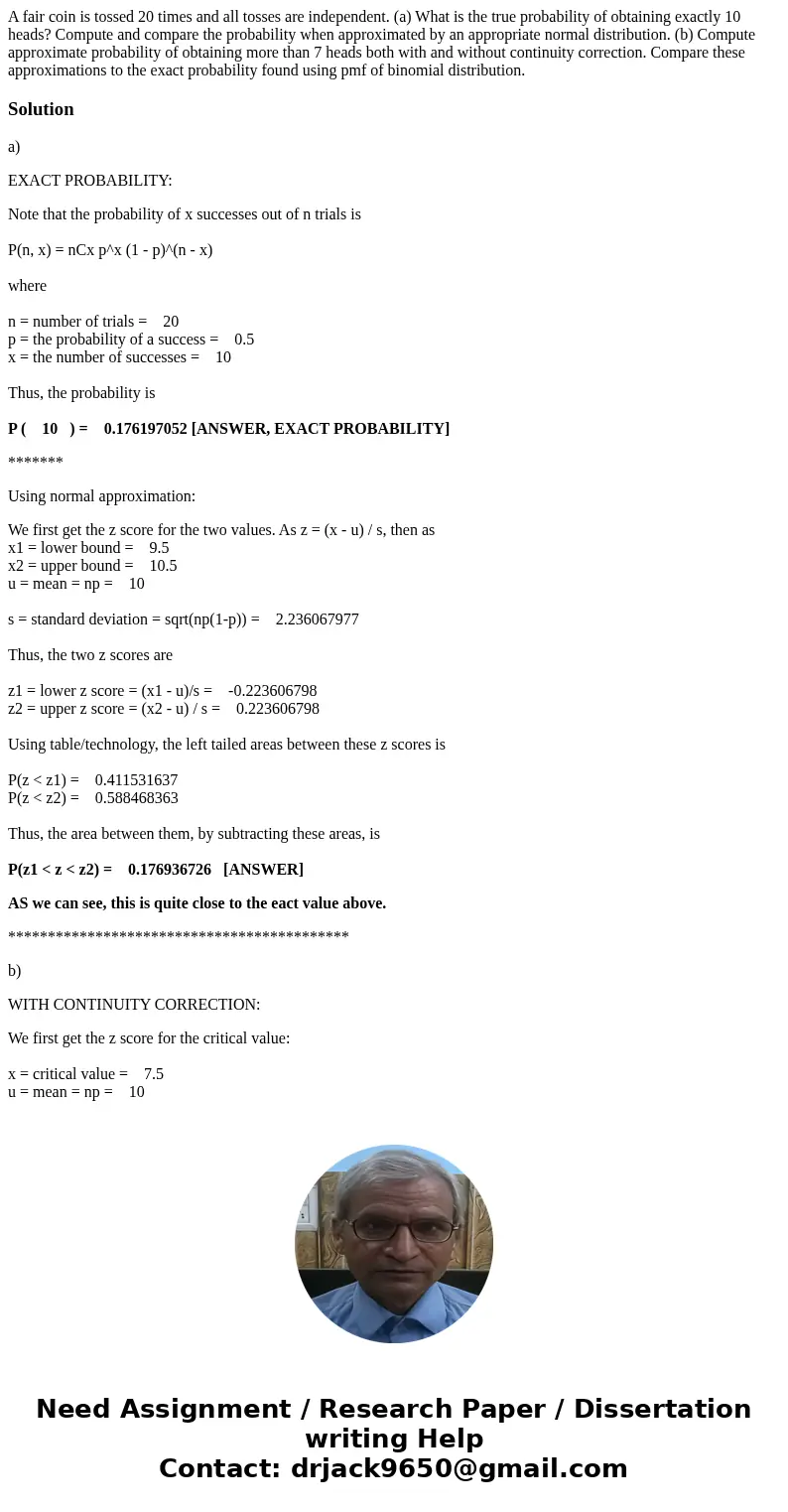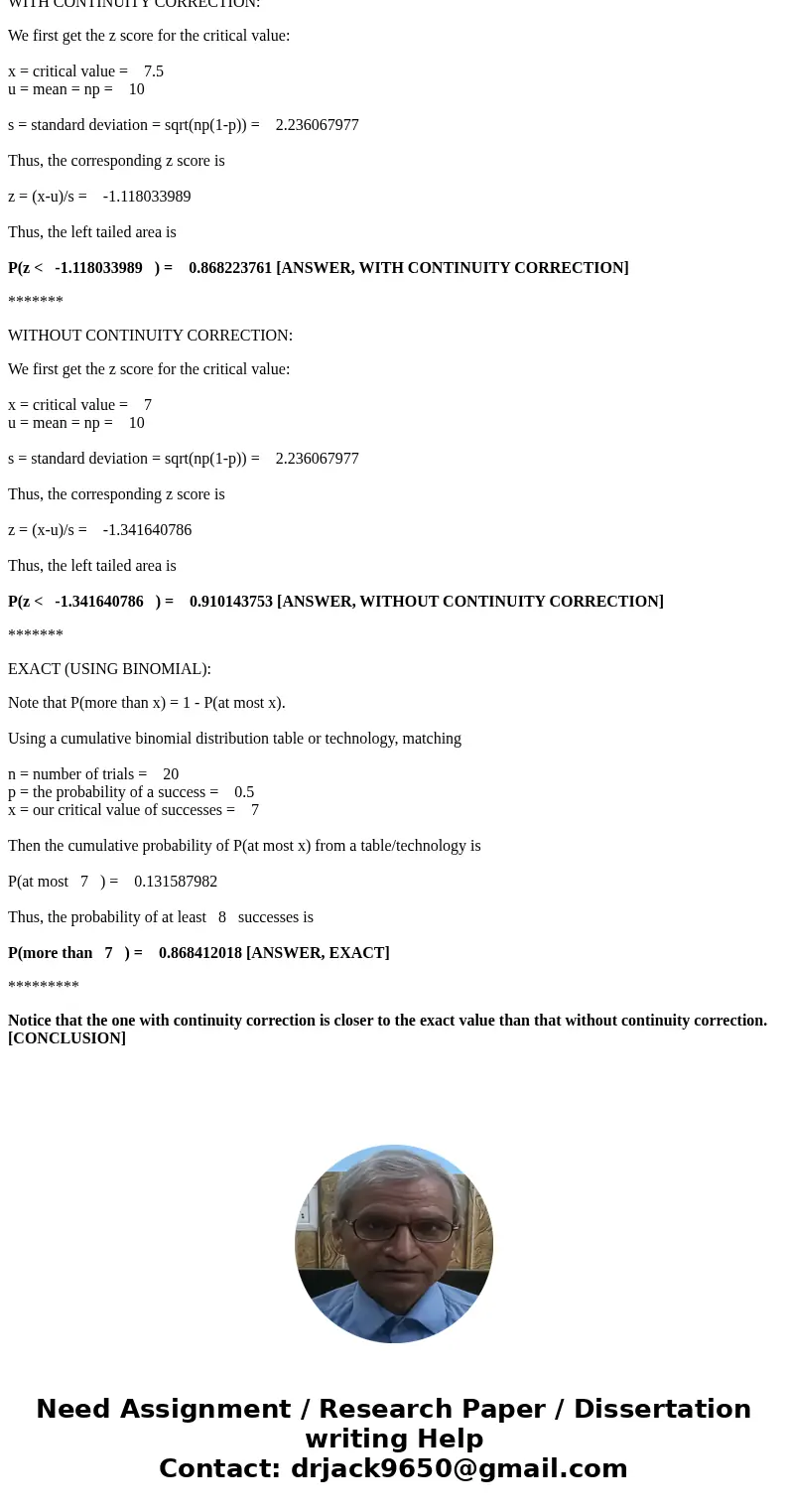A fair coin is tossed 20 times and all tosses are independen
A fair coin is tossed 20 times and all tosses are independent. (a) What is the true probability of obtaining exactly 10 heads? Compute and compare the probability when approximated by an appropriate normal distribution. (b) Compute approximate probability of obtaining more than 7 heads both with and without continuity correction. Compare these approximations to the exact probability found using pmf of binomial distribution.
Solution
a)
EXACT PROBABILITY:
Note that the probability of x successes out of n trials is
P(n, x) = nCx p^x (1 - p)^(n - x)
where
n = number of trials = 20
p = the probability of a success = 0.5
x = the number of successes = 10
Thus, the probability is
P ( 10 ) = 0.176197052 [ANSWER, EXACT PROBABILITY]
*******
Using normal approximation:
We first get the z score for the two values. As z = (x - u) / s, then as
x1 = lower bound = 9.5
x2 = upper bound = 10.5
u = mean = np = 10
s = standard deviation = sqrt(np(1-p)) = 2.236067977
Thus, the two z scores are
z1 = lower z score = (x1 - u)/s = -0.223606798
z2 = upper z score = (x2 - u) / s = 0.223606798
Using table/technology, the left tailed areas between these z scores is
P(z < z1) = 0.411531637
P(z < z2) = 0.588468363
Thus, the area between them, by subtracting these areas, is
P(z1 < z < z2) = 0.176936726 [ANSWER]
AS we can see, this is quite close to the eact value above.
*******************************************
b)
WITH CONTINUITY CORRECTION:
We first get the z score for the critical value:
x = critical value = 7.5
u = mean = np = 10
s = standard deviation = sqrt(np(1-p)) = 2.236067977
Thus, the corresponding z score is
z = (x-u)/s = -1.118033989
Thus, the left tailed area is
P(z < -1.118033989 ) = 0.868223761 [ANSWER, WITH CONTINUITY CORRECTION]
*******
WITHOUT CONTINUITY CORRECTION:
We first get the z score for the critical value:
x = critical value = 7
u = mean = np = 10
s = standard deviation = sqrt(np(1-p)) = 2.236067977
Thus, the corresponding z score is
z = (x-u)/s = -1.341640786
Thus, the left tailed area is
P(z < -1.341640786 ) = 0.910143753 [ANSWER, WITHOUT CONTINUITY CORRECTION]
*******
EXACT (USING BINOMIAL):
Note that P(more than x) = 1 - P(at most x).
Using a cumulative binomial distribution table or technology, matching
n = number of trials = 20
p = the probability of a success = 0.5
x = our critical value of successes = 7
Then the cumulative probability of P(at most x) from a table/technology is
P(at most 7 ) = 0.131587982
Thus, the probability of at least 8 successes is
P(more than 7 ) = 0.868412018 [ANSWER, EXACT]
*********
Notice that the one with continuity correction is closer to the exact value than that without continuity correction. [CONCLUSION]


 Homework Sourse
Homework Sourse